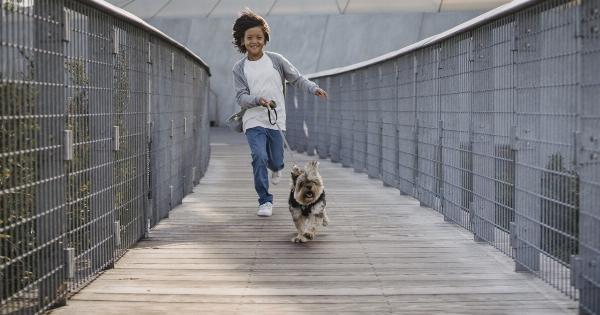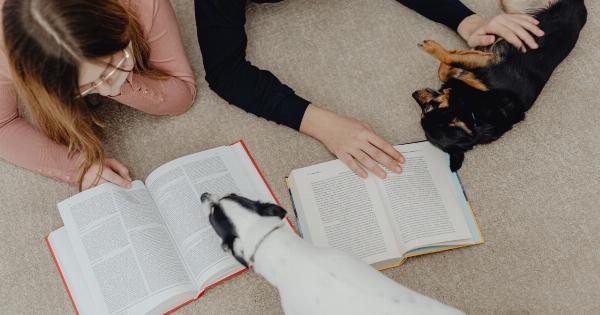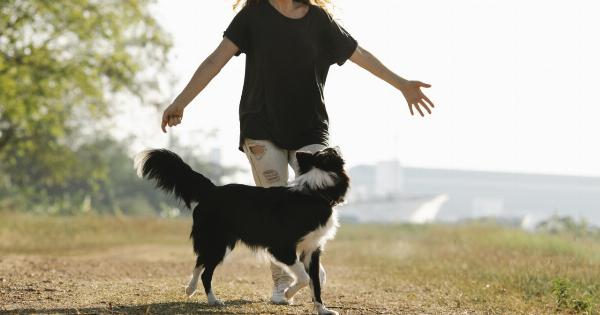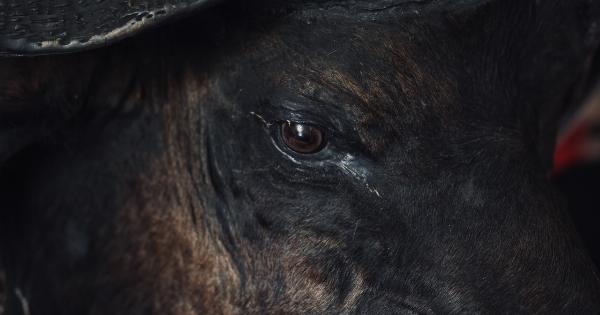Training your dog is not just about teaching basic commands like sit, stay, or fetch. It is also important to engage their minds and challenge them with new activities and tasks.
By expanding your canine’s mind, you can enhance their problem-solving abilities, improve their focus, and strengthen the bond between you and your furry friend. In this article, we will explore the art of teaching new things to your dog and provide valuable insights into how you can stimulate their mental capabilities.
The Importance of Mental Stimulation
Just like humans, dogs need mental stimulation to thrive and maintain a healthy state of mind. Boredom can lead to destructive behaviors, excessive barking, or even anxiety in dogs.
By engaging their minds and providing mental challenges, you can help prevent these issues and create a well-rounded and content canine companion.
Understanding Your Dog’s Learning Style
Before diving into teaching new things, it is crucial to understand your dog’s learning style. Different dogs may respond better to specific training techniques or methods.
Some dogs may have a visual learning style and learn best through demonstrations, while others may be more receptive to auditory cues or tactile experiences. Pay close attention to your dog’s reactions and adapt your teaching approach accordingly.
Positive Reinforcement and Rewards
Positive reinforcement is a key element in teaching new things to your dog. By rewarding desirable behavior, you are reinforcing the connection between the action and the reward, making it more likely for your dog to repeat that behavior in the future.
Utilize treats, praise, and playtime as rewards to motivate your dog and make the learning process enjoyable for both of you.
Breaking Tasks into Smaller Steps
When introducing a new task or trick to your dog, it is essential to break it down into smaller, manageable steps. Trying to teach the entire task at once can overwhelm your dog and hinder their progress.
By dividing the task into smaller increments, you can build a solid foundation and gradually increase the difficulty level as your dog improves.
Building on Existing Skills
Dogs learn best when they can relate new information to what they already know. By building on existing skills and gradually adding complexity, you can help your dog pick up new things more quickly.
For example, if your dog knows how to sit, you can use that knowledge as a foundation to teach them to lie down or shake paws.
Introducing Interactive Toys and Puzzle Games
Interactive toys and puzzle games are excellent tools for mental stimulation. These toys engage your dog’s problem-solving abilities and provide them with a challenge.
Look for toys that require your dog to figure out how to retrieve treats or manipulate objects. These activities not only keep your dog entertained but also provide a mental workout.
Teaching Advanced Tricks
Once your dog has mastered the basics, it is time to introduce more advanced tricks. Advanced tricks can include tasks like weaving through hula hoops, playing dead, or even agility training.
These activities require your dog to think critically, follow complex cues, and make split-second decisions. Remember to be patient and break down these advanced tricks into smaller steps to ensure success.
Engaging in Scent Work
Dogs have an exceptional sense of smell, and engaging them in scent work can provide both mental and physical exercise. Introduce scent games where your dog has to search for hidden treats or toys based on their smell.
This activity taps into their natural instincts and keeps their minds occupied.
Teaching New Commands and Vocabulary
Expand your dog’s vocabulary by teaching them new commands and words. Similar to how humans learn language, dogs can associate certain sounds with actions or objects.
By assigning a unique word or phrase to a specific behavior or item, you are enabling your dog to understand and respond to verbal cues more effectively.
Tapping into Instinctual Abilities
Different dog breeds have been selectively bred for specific purposes, such as herding, guarding, or retrieving. Tapping into your dog’s instinctual abilities can provide them with mental stimulation and fulfill their natural tendencies.
For example, herding breeds can be introduced to basic herding maneuvers, while retrieving breeds can enjoy activities like fetching or dock diving.
Challenging Environments and Novel Experiences
Varying the environment and exposing your dog to new experiences can keep their minds sharp and attentive. Take your dog on different walking routes, visit new parks, or arrange playdates with unfamiliar dogs.
These new situations provide mental stimulation and help your dog adapt and learn in different environments.
The Power of Patience and Consistency
Teaching new things to your dog takes time and patience. Dogs learn at their own pace, and it may take several repetitions for them to fully grasp a new concept. Consistency in your training methods is also crucial.
Stick to the same cues and rewards, and provide clear instructions to minimize confusion.
Conclusion
Expanding your dog’s mind through teaching new things is a fulfilling and enriching experience for both you and your canine companion.
By incorporating mental stimulation into their routine, you can enhance their cognitive abilities, prevent boredom-related issues, and strengthen your bond. Remember the importance of positive reinforcement, breaking tasks into smaller steps, and understanding your dog’s learning style.
With time, patience, and consistency, you can unlock your dog’s full potential and enjoy the incredible journey of learning together.





























